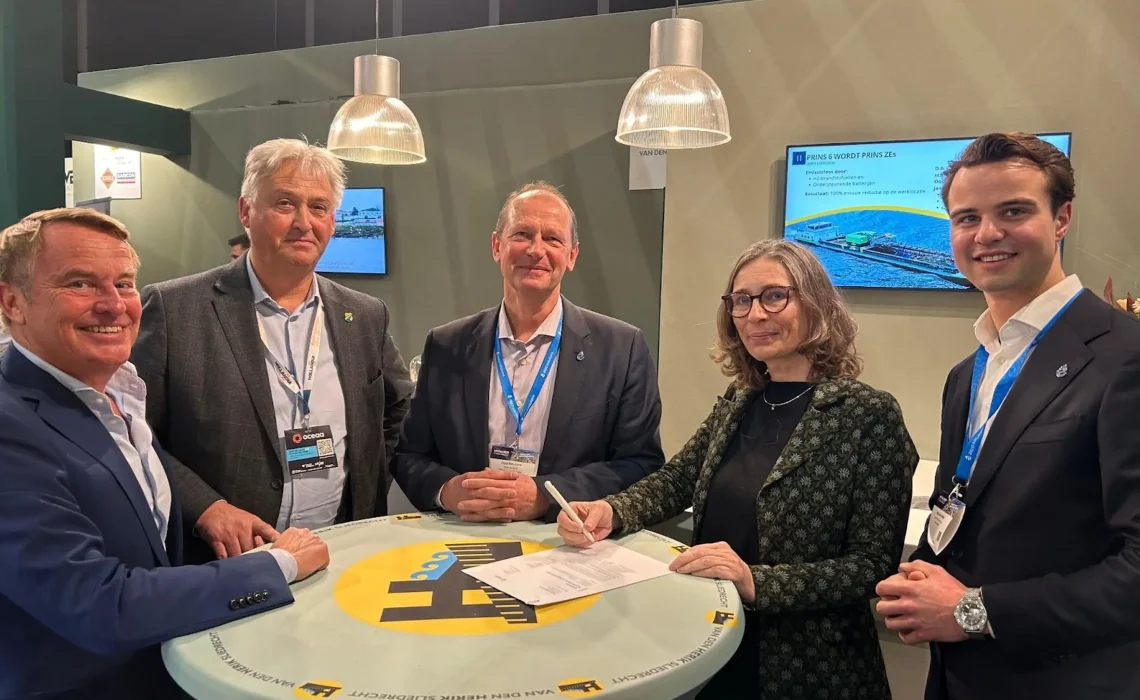In the first phase, the generator set will be deployed from the quays along the IJssel to power the ‘Prins 6’, a crane barge with already fully electric propulsion. The crane ship is mainly used for dredging and embankment work. Because the generator set is still on the quay in the first phase, it is possible to also charge other equipment with clean energy, such as electric excavators, during the day. By using zepp.solutions’ hydrogen technology, Van den Herik is taking a leading role in sustainable project implementation in activities that traditionally have been difficult to carry out emission-free.
Thanks to the hydrogen-powered generator set, Van den Herik achieves a projected annual emission reduction of 165 tonnes of CO2 eq. and 2 tonnes of nitrogen with the deployment of the Prins 6 alone. Moreover, noise pollution is kept to a minimum. This is not only in line with Van den Herik’s sustainability goals, but certainly also with the sustainability goals of Rijkswaterstaat (the Dutch Department of Waterways and Public Works).
Because of the initiative Van den Herik has taken with the development of an emission-free crane ship, this project was selected as a so-called Leader project by the TPKV (Transition Path Coastline Care and Fairway Maintenance) where the final ‘go’ could only be given in close cooperation with client Rijkswaterstaat.
The purchase agreement between Van den Herik and zepp.solutions was officially ratified during the InfraTech exhibition in Rotterdam at Van den Herik’s stand. Pictured: Isolde Struijk and Jan Huijbers (Van den Herik-Sliedrecht management board), Roger Mol (chief sustainability director and CPO Rijkswaterstaat), Arne de Kock and Lennart van der Ploeg (zepp.solutions).

